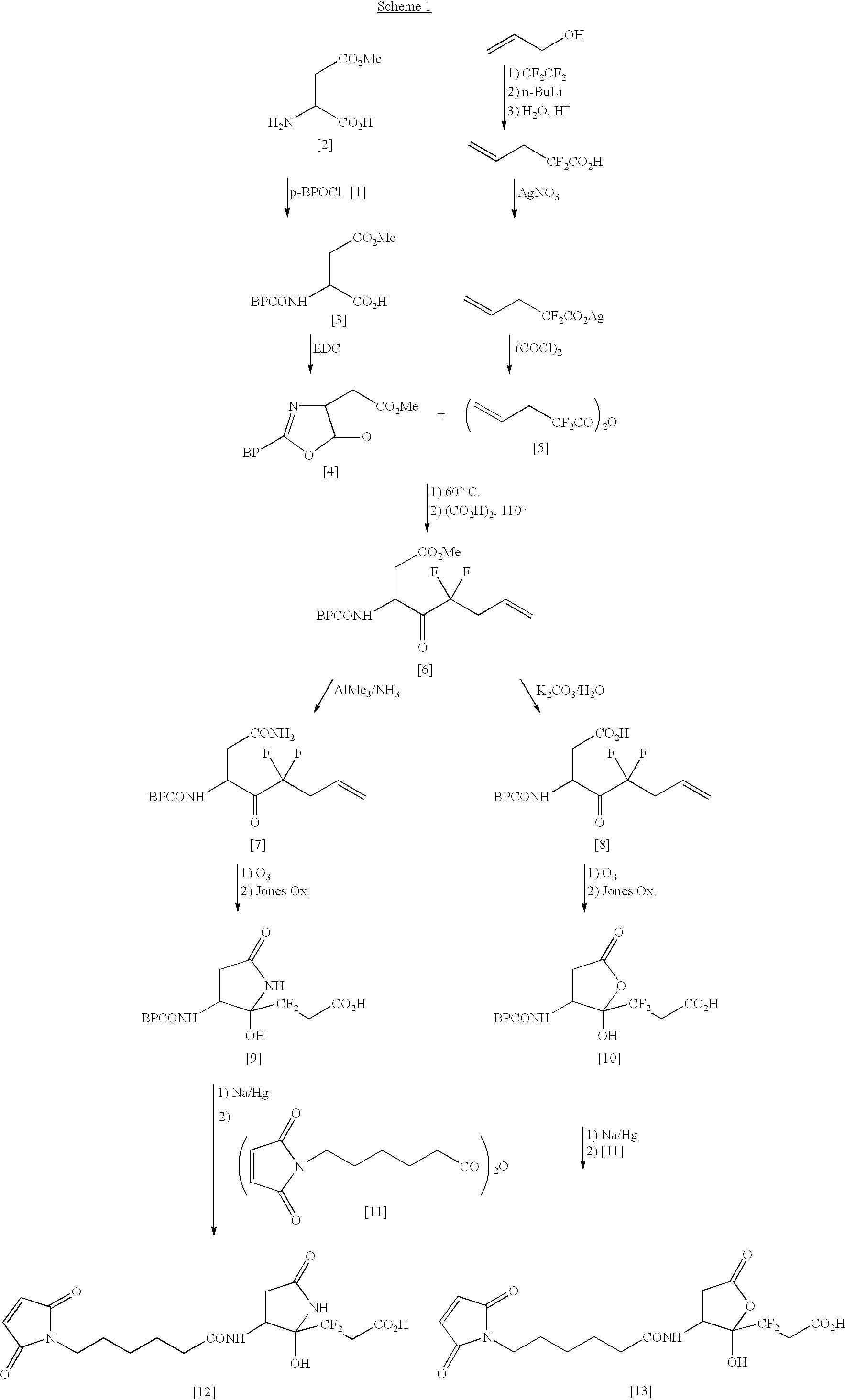Methods for enhancing the rate of modification of metastable bonds
- Summary
- Abstract
- Description
- Claims
- Application Information
AI Technical Summary
Benefits of technology
Problems solved by technology
Method used
Image
Examples
example i
Method for Determining Metastable Peptide Bonds in a Protein Using Human Immunodeficiency Virus Type 1 (HIV-1) Glycoprotein 120 (GP 120)
GP 120 is purified to homogeneity by methods well known in the art. The purified GP 120 is dissolved in 50 mM Tris.HCl buffer containing 10 mM CaCl.sub.2, pH 9.0, to give a final concentration of 1 mg / ml and then heated at 55.degree. C. for 48 hr. The reaction mixture is analyzed by SDS-polyacrylamide gel electrophoresis (Laemmli, 1970) to determine the fragmentation pattern. The gels are stained with Coomassie Brilliant Blue R-250 in order to visualize the protein bands. Bands migrating faster than the gp 120 band based on a comparison to molecular weight standards indicate cleavage of metastable bonds. The individual fragments produced by thermal autolysis are purified to homogeneity by HPLC and their identity is established by amino acid analysis after acid hydrolysis and sequencing. Comparison of all these data with the known amino acid sequence...
example ii
Synthesis of Analogs for Metastable Peptide Bond Cleavage
In a further aspect of the invention, antibodies elicited by immunogens comprising conformationally constrained peptide analogs accelerate the hydrolysis of normal peptides. Such immunogens are prepared from, for example, certain cyclic or acyclic peptide analogs.
This aspect of the invention utilizes analogs of the cyclic structures which are intermediates in the spontaneous reactions which these metastable bonds undergo at a much higher rate than do other peptide bonds. These intermediates result from intramolecular attack of the side chain amide or acid on the metastable peptide bond between two amino acids such as ASN-PRO, ASN-GLY, ASP-PRO, ASP-GLY, GLN-X or GLU-X where X is any amino acid. The analogs mimic the conformation of the metastable peptide bond during spontaneous hydrolysis.
Antibodies induced by such analogs prepared as immunogens bind to and promote the cleavage of particular metastable peptide bonds by inducing...
example iii
In Vivo Elicitation of Catalytic Antibodies to a HIV gp 120 Coat Protein Using an Immunogenic Peptide
A. Preparation of the Immunogen
Once the metastable peptide bond of interest is selected as described in Example I, it is necessary to determine the optimal hapten for inducing rate enhancing antibodies. The optimal rate enhancing antibodies are induced by a hapten which is immunologically cross reactive with an epitope located at or near the metastable bond of interest. The hapten which will induce an antibody that will provide maximum rate enhancement must be determined empirically. Antibodies directed to different sites at or near the metastable peptide bond of interest are screened to determine which are rate enhancing, and of the latter, which are maximally rate enhancing.
A series of octapeptide sequences containing, or adjacent to, a metastable peptide bond identified by the methods described in Example I is synthesized. The sequences may either be homologous or identical to the...
PUM
 Login to View More
Login to View More Abstract
Description
Claims
Application Information
 Login to View More
Login to View More - R&D
- Intellectual Property
- Life Sciences
- Materials
- Tech Scout
- Unparalleled Data Quality
- Higher Quality Content
- 60% Fewer Hallucinations
Browse by: Latest US Patents, China's latest patents, Technical Efficacy Thesaurus, Application Domain, Technology Topic, Popular Technical Reports.
© 2025 PatSnap. All rights reserved.Legal|Privacy policy|Modern Slavery Act Transparency Statement|Sitemap|About US| Contact US: help@patsnap.com



